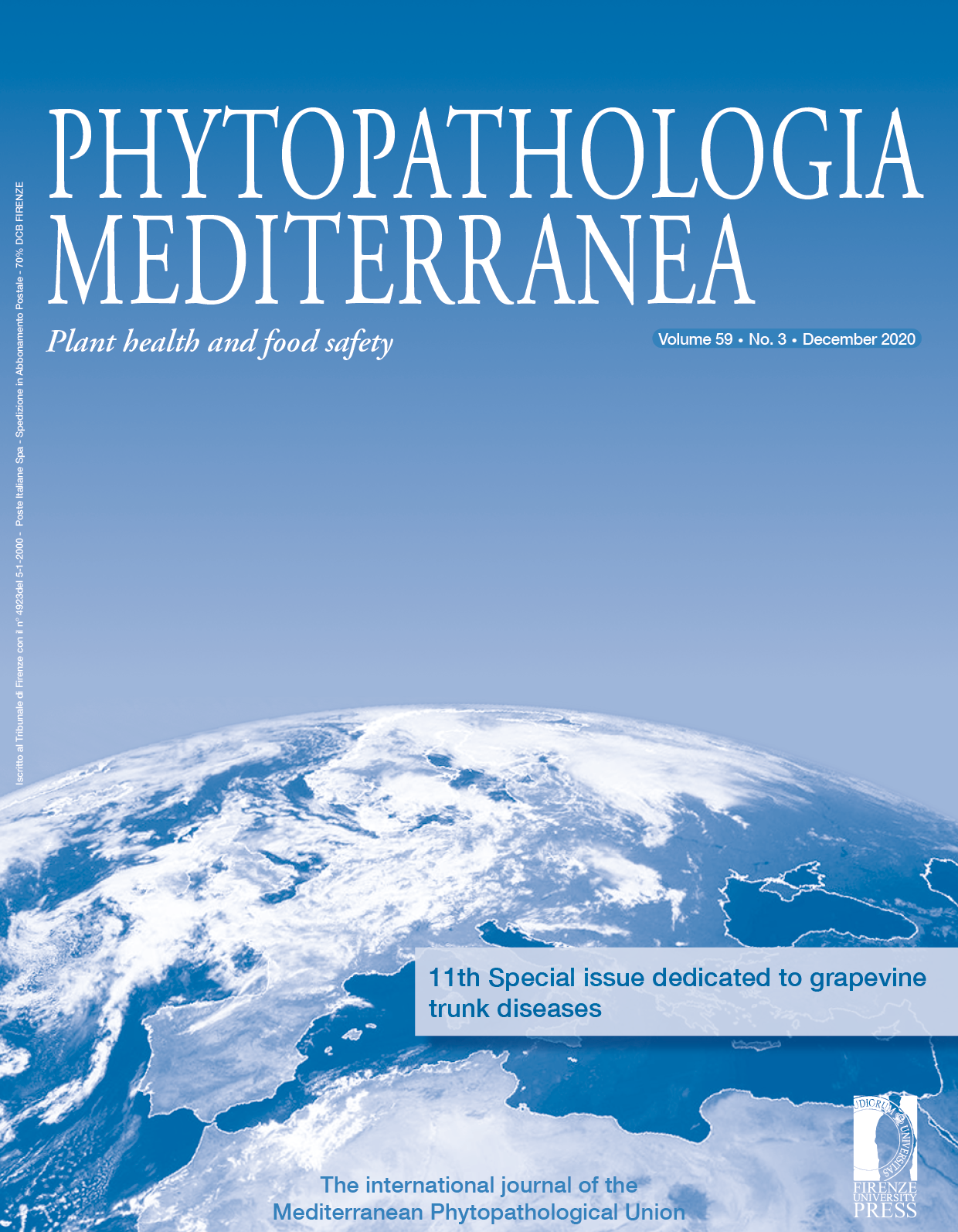Published 2020-12-11
Keywords
- Botryosphaeriaceae,
- pome fruit,
- stone fruit,
- olive,
- virulence
How to Cite
Abstract
Neofusicoccum australe is one of the most important Botryosphaeriaceae pathogens occurring on fruit and vine crops. This fungus was recently taxonomically reassessed, identifying N. stellenboschiana as a separate species. Previous pathogenicity studies used N. stellenboschiana and N. australe isolates as N. australe, so assessment of the pathogenicity of these two species on grapevine and other hosts was required. A pathogenicity trial was conducted on detached shoots of grapevine, plum, apple, olive and Peruvian pepper tree. Shoots were individually inoculated with 11 N. australe and eight N. stellenboschiana isolates originally isolated from grapevine, plum, apple, olive, Peruvian pepper and fig. Both species formed lesions on all five hosts and were re-isolated 5 weeks post-inoculation. In general, the largest lesions were formed on plum and smallest on Peruvian pepper. Isolate host origin did not influence ability to cause lesions on other hosts. Isolates of N. australe and N. stellenboschiana differed in virulence on the various hosts, ranging from those that caused the largest lesions, a group causing intermediate lesions, and another causing lesions similar to uninoculated controls. The study demonstrates that N. australe and N. stellenboschiana isolates originating from various fruit hosts can infect alternative hosts including grapevine and other major fruit crops.
Downloads
References
gonzdiaz@gmail.com
Universidad de Talca, Chile
Reason: Expertise in Bot on grape and apple including pathogenicity studies.
Prof Michael Fischer
michael.fischer@julius-kuehn.de
Julius Kühn-Institut, Federal Research Institute for Cultivated Plants, Germany
Reason: Trunk disease expert of grapevine and fruit hosts.
Dr Jan van Niekerk
Citrus Research International, South Africa
janvn@cri.co.za
Reason: Conducted the first ever comprehensive Bot survey in SA including pathogenicity studies (Mycologia 96: 2004)
Dr José Ramón Úrbez-Torres,
Agriculture and Agri-Food Canada
joseramon.urbeztorres@agr.gc.ca
Reason: Bot expert, including pathogenicity studies on grape and olive
Dr. David.Gramaje
Instituto de Ciencias de la Vid y del Vino (ICVV), Spain
david.gramaje@icvv.es
Reason: Grapevine trunk diseases expert.







